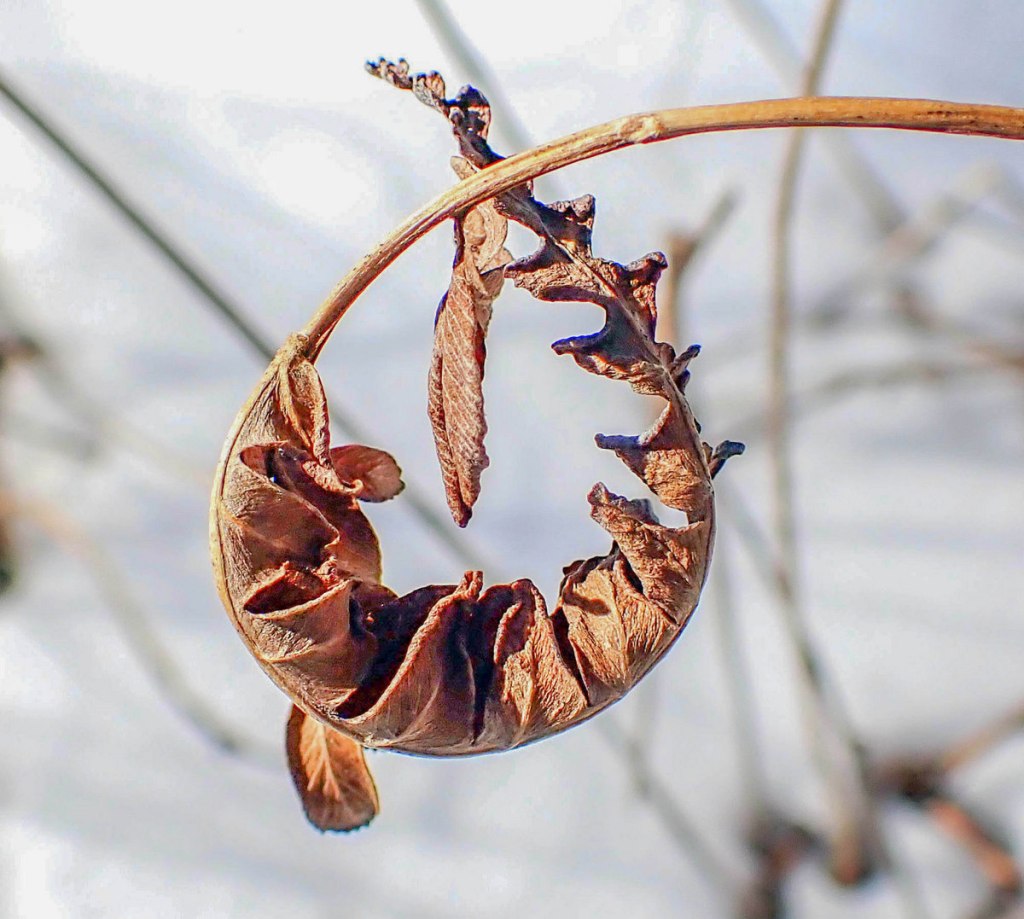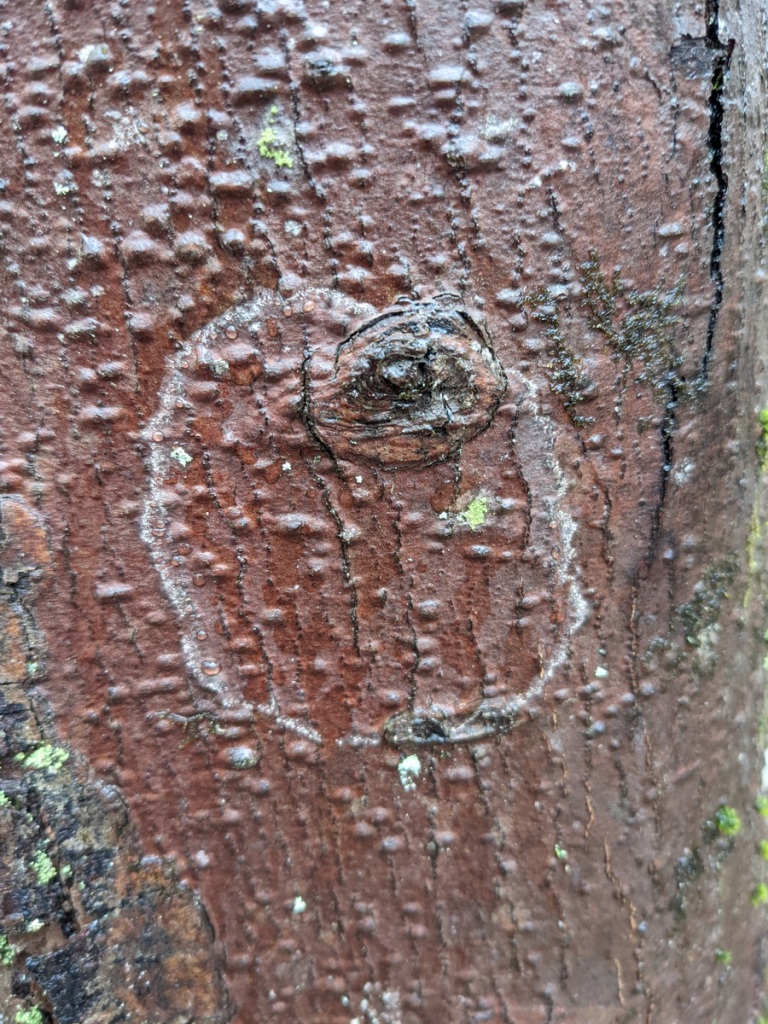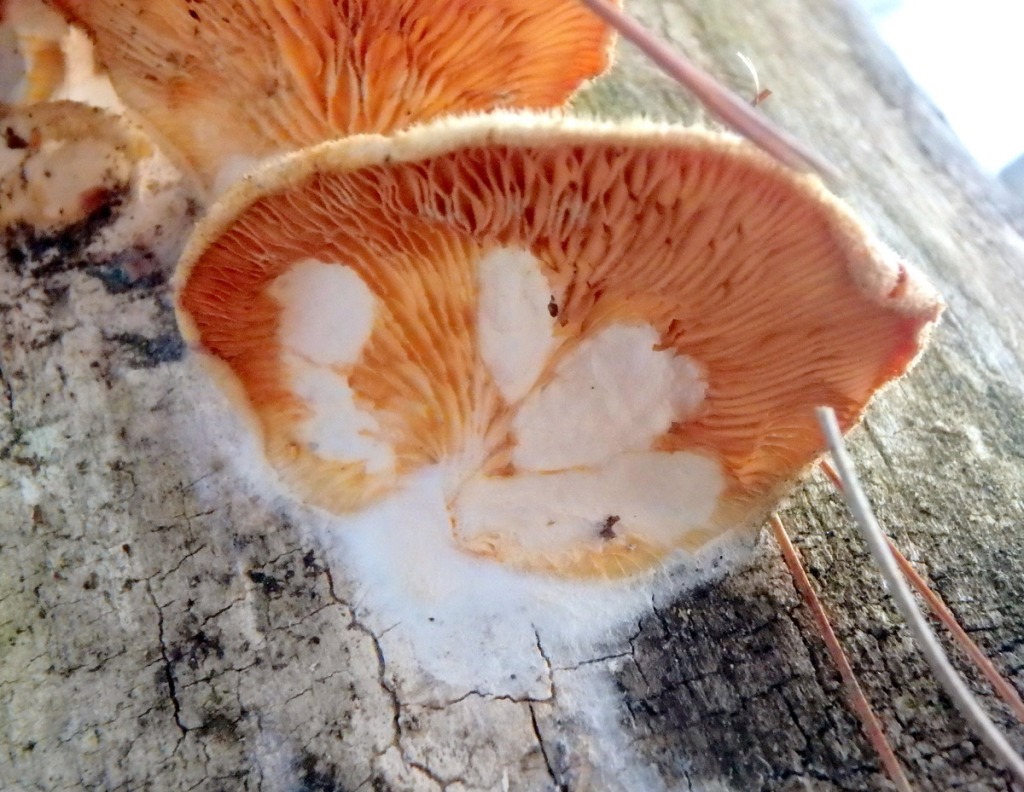
The roller coaster changes between winter and spring go on in this area. Yesterday I was taking photos of Johnny jump ups and today as I write this it is 30 degrees F.

But the cold won’t hurt the early spring plants any, especially those in the pansy family like viola tricolor. They’re hardy, and built for cold finicky weather, and that’s why you’ll often see them blooming away beautifully in window boxes in March. I have to say I was quite surprised to see them blooming in February though. I think that is a first, but after two or three days in the 50s they responded. This is why, when I talk about spring on this blog, I’m not talking about calendar spring. I’m talking about the spring that the plants and trees and birds tell me is here now.

Except for an ice shelf over there on the left the ice has melted off the stream that runs through the skunk cabbage swamp. It was blue and beautiful on a sunny day.

And the skunk cabbages are growing quickly. Soon the spathes like the one seen here will open to reveal the spadix, which will be covered in tiny, pollen bearing flowers.

It rained hard the night before this was taken and instant ponds popped up everywhere. That’s a good sign that the soil under them is still frozen. Since the water can’t soak into the ground and has nowhere to go it ponds up in the low spots. This one was huge and I was surprised there were no ducks in it.

After it started to cool off again, I went to a waterfall to see if any ice had formed. I wasn’t disappointed.

Everything on the shoreline was covered with ice.

This grass plant had grown ice on its leaves that was thicker than my thumb, all from splashing drops of water. When I see ice like this I think of a candle. A candle starts with a wick, which is dipped again and again into melted wax. In this case each blade of grass is like a wick, splashed over and over by water.

This stone was covered in round spheres of ice. I can’t explain the mechanics of how this ice forms but I do know that splashing water creates it.

There was also plenty of white puddle ice to be seen. I’ve read that it is oxygen that makes the ice white like this. Microscopic bubbles, I suppose. It held the memory of what looked like a current.

This was a surprise and it was flowing right out of the ground just where I stood. I thought it was bright red but my color finding software sees rosy brown, chocolate and dark salmon pink. Though it looks strange it’s really just groundwater that has leeched out various minerals in the soil. Most of those minerals I’d guess, are iron oxide based. There are probably bacteria present as well and I’d guess that the heavy rain we had flushed everything out of a groundwater reservoir of some kind. Scientists say it’s all non toxic and harmless, but I admit it doesn’t look it.

I can remember as a boy seeing the Ashuelot River run almost the color of that seep in the last photo, when the woolen mills in Keene released their dyes into it. It ran all the colors of the rainbow, but when I need to think of a good success story I think of the river, because over the years it was cleaned up. Now trout swim in it once again and bald eagles fish here. We humans can accomplish quite a lot when we put our minds to it.

The river looked fairly placid in that previous shot but this is what was going on downstream. The camera made the water look dark but it was really chocolate brown from all the soil that is washing into it from flooding. This section looked to be about twice its normal width and it roared mightily.

Instead of a roar the ice on Halfmoon Pond in Hancock pings, creaks and twangs, especially when the wind blows. It was covered in melt water recently and looked like a mirror. It will freeze and thaw until one day, it won’t freeze any longer. I still think that ice out will happen in March this year.

When warm air flows over the cold ice sometimes the pond creates its own fog. Just another hint of spring that I enjoy seeing.

The witch hazels didn’t dare to unfurl their petals on this cold day. It’s kind of amazing how they can pull their long strap shaped petals back into such tiny buds but they’re fairly accurate. I’ve seen them get frost killed in the past but that doesn’t happen often. Each fuzzy bud that the petals come out of is less than the diameter of a BB that you would put in an air rifle. That’s 0.177 inches so I’d guess the buds are about an eighth of an inch, or .125.

The reticulated iris (I think) had grown some in the week since I had seen them last, and so had the daffodils. The seed pods you see are from redbud trees. These spring flowering bulbs grow under them.

Tree buds were calling to me as they always do in spring but I couldn’t see any signs of swelling in the pretty blue buds of the box elders. This tree in the maple family has beautiful flowers in spring so it’s always one of those I check regularly. They’ll bloom just after the red maples do.

These are the beautiful sticky, lime green female box elder flowers, for those who haven’t seen them. I’ll be waiting impatiently for both them and the red maple flowers. Box elders usually flower in April and red maples sometimes by mid-March. It all depends on the weather.

Speaking of red maples, here are some of their flower buds. I can see a little movement in them. The bud scales are starting to ease and open but I hope they won’t because it’s too early. I’ve seen trees with every flower killed by frost but nature has that all figued out, and not all trees bloom at the same time. The bloom times are staggered over several weeks, so if a killing frost happens not all tree flowers will be damaged by it.

I walked past the European beech I know of in Keene and saw its seed pods all over the ground, falling I suppose, to make room for new ones.

They were all empty, even the ones still on the tree. No wonder there are so many happy squirrels in that area.

Many, many years ago someone went around Keene with a stencil of a foot and spray-painted small feet here and there throughout town. I was surprised to find one still in good condition one day. It told me to stay on the trail. Keep walking and keep seeing the wonders.

It doesn’t take much to make my heart soar in spring; seeing sap buckets hanging on the sugar maples will do it every time. Though this post might seem to be all over the place, with flowers and ice and snow, that’s what spring is in New Hampshire. We are in the push-pull transition time between winter and spring and right now, winter is making a comeback. We are expecting a foot of snow as I finish this post, but it won’t last long and spring will win out as it always does. The trees producing sap means the ground has thawed and soon everyone will be wearing a smile. If you ask most of them why they’re smiling chances are they won’t be able to tell you but it’s just that spring tonic. It just makes you happy, for no particular reason.
The first day of spring is one thing, and the first spring day is another. The difference between them is sometimes as great as a month. ~Henry Van Dyke
Thanks for stopping in.

























































































































































